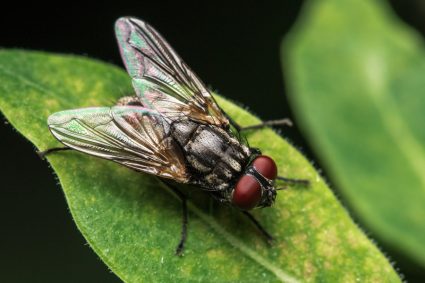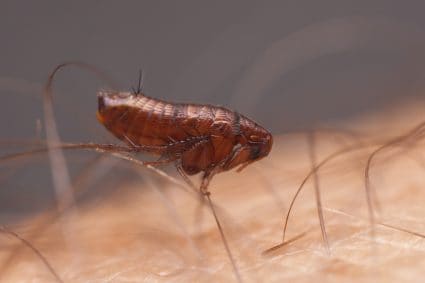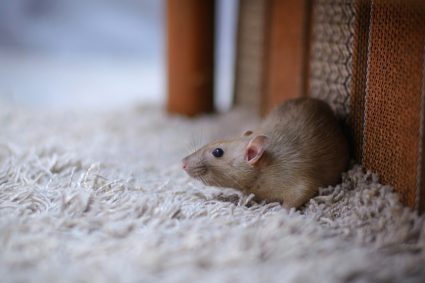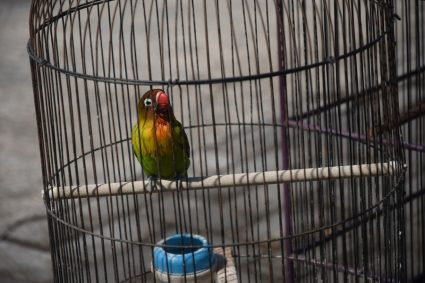
Fleas are a common household pest that can cause discomfort and health issues for both pets and their owners. One of the most challenging aspects of dealing with a flea infestation is finding and eliminating their eggs. In this comprehensive guide, we will cover everything you need to know about how to find flea eggs in your house.
To find flea eggs in the house, start by inspecting your pet with a flea comb, paying attention to areas like the ears, groin, and tail. Next, check your home, especially areas where your pet spends a lot of time, such as their bedding, carpets, and furniture. Flea eggs are tiny, oval, and off-white, resembling grains of rice. You can also use the tape test or wear white socks and shuffle over your carpet to check for fleas. If you find flea eggs, take steps to eliminate them and the adult fleas to prevent an infestation.
What Do Flea Eggs Look Like?
Flea eggs are very small, less than half a millimeter long, and are oval in shape. They are of a whitish color and under a microscope, they look like rice grains. Over time, their appearance may change. Freshly deposited flea eggs are semi-transparent, shiny, and colorless to white. The eggs take on a more opaque and pearly-white color as they mature.
Where to Find Flea Eggs
Fleas lay their eggs on the host animal, usually a pet like a cat or dog. The eggs stick to the pet’s skin for a while, but over time, they dry up and fall off. This means you can find flea eggs in places where your pet spends a lot of time. These places include your pet’s bedding, carpets, and gaps between floorboards. Flea eggs can also be found on upholstered furniture, curtains, and your bed and bedding.
How to Find Flea Eggs
Inspect Your Pet
Start by checking your pet for signs of fleas. Look for flea dirt (flea feces that look like black pepper) and adult fleas, especially around the ears, groin, stomach, back, tail, and armpits. Use a flea comb or fine-toothed comb to comb through your pet’s fur. After each stroke, check the comb for live fleas and flea eggs.
Inspect Your Home
Wear white socks and shuffle your feet slowly over the rug or carpet. After a few seconds, stop and then check for any live fleas using your flashlight. Check your pet’s bedding and crate for flea feces and live fleas. Inspect upholstered furniture and areas where your pets tend to groom themselves. Flea eggs are much easier to see when placed in front of a dark background, so consider using a dark piece of paper under the eggs for easier identification.
Check Your Yard
Fleas can also be found in your yard, especially in shady and moist areas. Put on a pair of white socks and shuffle your feet in these areas. Stop for some time and check for fleas on your socks with your flashlight. Other hotspots include areas where your pet tends to play or rest outside, around and under bushes and trees, around and under porches or decks, and areas where most leaf debris are collected.
Do The Tape Test
Another way to test your carpets to see if fleas have moved in is by doing a tape test. Tape can be placed sticky side up, or you can use a glue trap for mice. Place the test strip in an inconspicuous place where your animals can’t get to it. If there are fleas on the tape in the morning, you have an issue.
Remember, if you find flea eggs in your house, it’s important to take steps to eliminate them and the adult fleas to prevent an infestation. This can include treating your pet with an anti-flea product, cleaning your home thoroughly, and possibly seeking professional pest control assistance.
Common Signs of Flea Infestation in a House
Common signs of a flea infestation in a house include excessive scratching from pets, hair loss in pets, welts and red skin, bites around ankles and knees, pale gums in pets, flea dirt, and restless pets. If you notice any of these signs, it’s important to take action quickly to prevent the infestation from worsening. This may involve treating your pets with flea medication, thoroughly cleaning your home, and possibly hiring a pest control specialist if the infestation is severe.
Identifying Flea Eggs
To identify flea eggs among other small particles in your house, you can follow these tips:
- Flea eggs are almost microscopic, typically about 0.5 millimeters in length and about half as wide, similar in size to a grain of salt.
- They have a soft shell called a “chorion” and are off-white in color, resembling a grain of salt but more oval in shape.
- Flea eggs are not sticky and tend to fall off their host (pets) into the environment.
To distinguish flea eggs from other particles, such as dandruff or sand, place the speck on a dark piece of paper under a magnifying glass to identify the characteristically oval shape of a flea egg. Dandruff, on the other hand, consists of thin, light, irregular-shaped flakes of skin. Flea dirt, or flea feces, is another particle that can be mistaken for flea eggs. Unlike flea eggs, flea dirt is dark and crumbly. You can identify flea dirt by putting a few of the specks on a white piece of paper and adding a couple of drops of water. If you see a red color, which signals the presence of digested blood, then you’re dealing with flea dirt.
Precautions to Take While Handling Flea Eggs
Handling flea eggs requires a comprehensive approach that targets not only the eggs but also the adult fleas and their entire life cycle. Flea treatments that contain ingredients that kill adult fleas and insect growth regulators (IGRs), which stop flea eggs from maturing into adults, should be used. Other precautions include vacuuming thoroughly, using flea sprays and foggers, washing fabrics, using anti-flea shampoo, and consulting with a vet for the best treatment options for your pets.
In conclusion, finding and eliminating flea eggs is an important step in controlling a flea infestation. By understanding what flea eggs look like, where to find them, and how to eliminate them, you can protect your pets and your home from these pesky pests. Consult with a pest control professional or veterinary expert for further guidance.
Frequently Asked Questions
How long does it take for flea eggs to hatch?
Flea eggs typically hatch into larvae within 2 to 14 days, depending on the environmental conditions. Warmer and more humid conditions can speed up the hatching process.
Can flea eggs survive on human hair?
No, flea eggs cannot survive on human hair. Fleas prefer to lay their eggs on furry animals like cats and dogs. The eggs can then fall off these animals and into the environment, where they can hatch into larvae.
Can I use regular cleaning products to get rid of flea eggs?
Regular cleaning products might not be effective in eliminating flea eggs. It’s best to use products specifically designed to kill fleas and their eggs. These include flea sprays, foggers, and powders.
Do flea eggs die in the washing machine?
Yes, washing your pet’s bedding and your bedding in hot water and drying them on a high-heat setting in the dryer can effectively kill flea eggs.
How often should I treat my pet for fleas to prevent an infestation?
It’s recommended to treat your pets for fleas every month, especially during the warmer months when fleas are most active. However, the frequency can depend on the specific product you’re using, so it’s best to follow the manufacturer’s instructions or consult with a vet.











